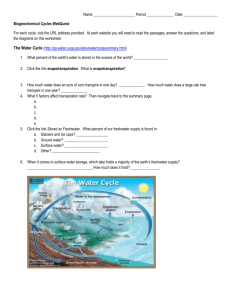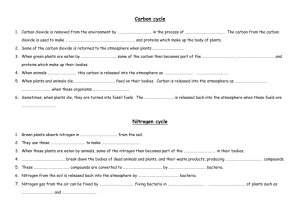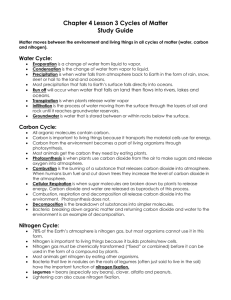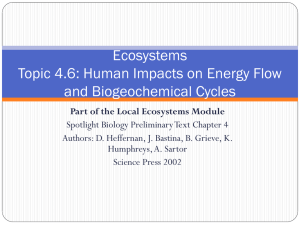Carbon and Nitrogen Cycle Notes
advertisement
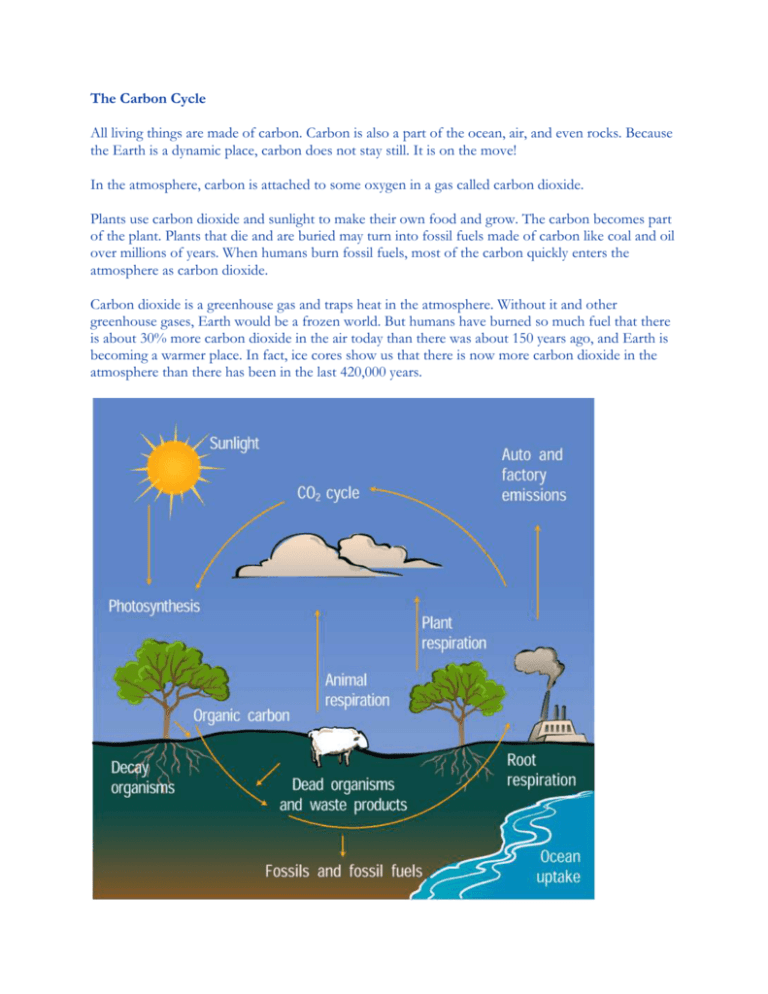
The Carbon Cycle All living things are made of carbon. Carbon is also a part of the ocean, air, and even rocks. Because the Earth is a dynamic place, carbon does not stay still. It is on the move! In the atmosphere, carbon is attached to some oxygen in a gas called carbon dioxide. Plants use carbon dioxide and sunlight to make their own food and grow. The carbon becomes part of the plant. Plants that die and are buried may turn into fossil fuels made of carbon like coal and oil over millions of years. When humans burn fossil fuels, most of the carbon quickly enters the atmosphere as carbon dioxide. Carbon dioxide is a greenhouse gas and traps heat in the atmosphere. Without it and other greenhouse gases, Earth would be a frozen world. But humans have burned so much fuel that there is about 30% more carbon dioxide in the air today than there was about 150 years ago, and Earth is becoming a warmer place. In fact, ice cores show us that there is now more carbon dioxide in the atmosphere than there has been in the last 420,000 years. The Nitrogen Cycle Take a deep breath. Most of what you just inhaled is nitrogen. In fact, 80% of the air in our atmosphere is made of nitrogen. Your body does not use the nitrogen that you inhale with each breath. But, like all living things, your body needs nitrogen. Your body gets the nitrogen it needs to grow from food. Most plants get the nitrogen they need from soil. Many farmers use fertilizers to add nitrogen to the soil to help plants grow larger and faster. Both nitrogen fertilizers and forest fires add huge amounts of nitrogen into the soil and nearby lakes and rivers. Water full of nitrogen causes plants and algae to grow very fast and then die all at once when there are too many for the environment to support.





